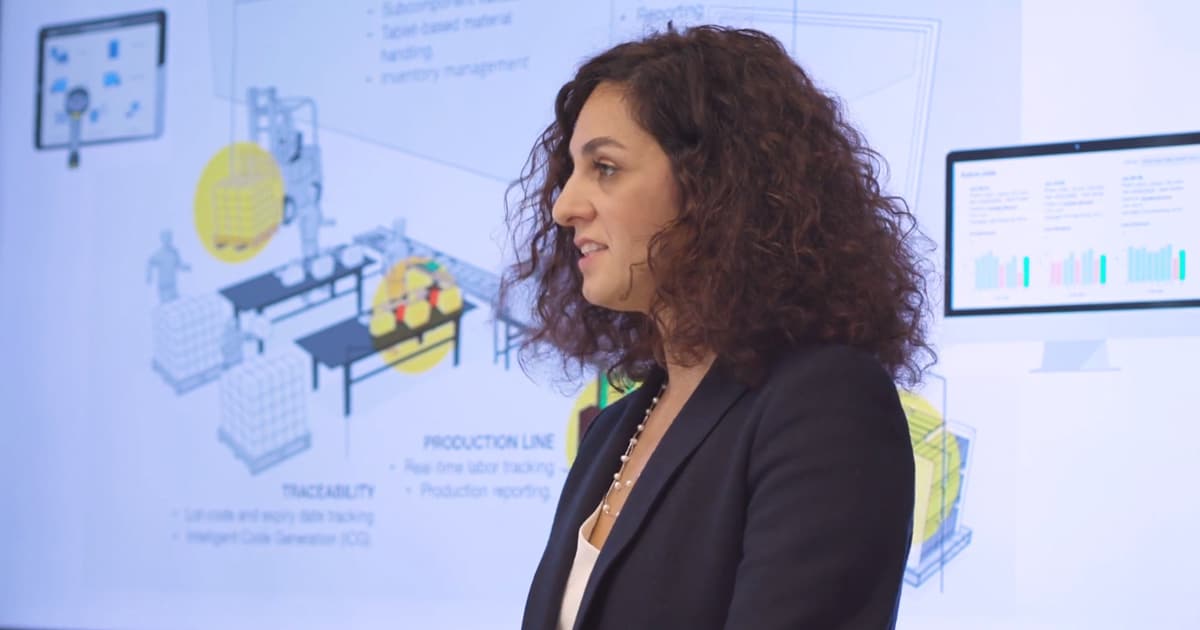If there’s one thing I’ve learned over the years, it’s that the most powerful supply chain insights don’t always come from white papers or boardrooms—they often come from the plant floor. In my recent conversation on Supply Chain Unfiltered with Bennett Bishop, Director of Operations Finance at Ice Industries, we unpacked how real-time production visibility is transforming operations not just for frontline workers, but across the enterprise.
Bennett’s background in finance offers a refreshing lens into how data, metrics, and digital transformation are shaping smarter decision-making in manufacturing. What started as a journey to eliminate paper-based processes evolved into a full-blown strategy for operational excellence—and along the way, Ice Industries even achieved 100% inventory accuracy in one of their facilities.
Here are three key lessons from our conversation that stuck with me, which might just transform how you think about real-time data and your own plant operations.
1. Smarter Metrics Drive Smarter Behavior
Bennett said it best: “We want to know what’s happening, and we really want to know what’s real.” For him and the finance team at Ice Industries, real-time data isn’t just a technical upgrade. It’s a foundational shift in how the business understands its performance.
Too often, we rely on KPIs that look good on paper but don’t reflect operational truth. And when KPIs are misaligned or manipulated—even unintentionally—they create the wrong incentives. As Bennett explained, “Metrics drive behaviors, and we don’t want to drive the wrong ones.”
What I found particularly enlightening was Ice’s effort to ensure their KPIs are rooted in clean, real-time data from the plant floor. With Smart Factory technology integrated into their operations, they’ve moved away from handwritten production records toward automated tracking systems that leave no room for ambiguity.
The result? Better financial forecasting, more accurate daily performance reviews, and ultimately, improved alignment across roles—from machine operators to the C-suite.
📌 Takeaway: If your KPIs aren’t tied to real-time, trustworthy data, you might be measuring the wrong things and guiding your teams in the wrong direction.
2. Digitization Unlocks Hidden Efficiency (and Eliminates Micro Waste)
During our chat, Bennett shared a memory that immediately took me back to my early days in maintenance engineering: manually jotting down production counts from a machine counter, only to enter them later into a spreadsheet (or in my case, Lotus Notes!).
Many companies today think they’re “digital” because they use spreadsheets, but that’s not digitization. That’s delayed, human-dependent data entry. As Bennett pointed out, those small inaccuracies—like miscounting parts in a bin or rounding production totals—compound over time and cloud true performance.
What Smart Factory gave Ice Industries was the ability to see exactly how many times a machine cycled, how much product was produced (including scrap), and when things went off course. One of the most compelling use cases he described was spotting “micro-stoppages”: those 30-second or 2-minute lags waiting on forklifts or pallets that, over the course of a shift, add up to major production losses.
These micro inefficiencies are invisible to the naked eye, but when surfaced through real-time tracking, they become low-hanging fruit for improvement.
📌 Takeaway: Real-time visibility doesn’t just tell you when something’s broken: it reveals the small, systemic frictions that quietly erode productivity every day.
3. Inventory Accuracy Isn’t a Dream—It’s a Discipline
Now for one of my favorite moments in the conversation: When Bennett shared that Ice Industries had hit 100% inventory accuracy in one of their buildings. As a former plant girl, my jaw dropped. That’s a dream KPI.
And yet, it wasn’t magic. It was the result of digital diligence.
Before Smart Factory, Ice Industries relied on manual counts of raw materials like coil steel, which naturally leads to guesswork around scrap, setup parts, and line yield. But with automated tracking and digital scrap capture, Ice could trace every part and every machine cycle. When they did a physical count, the system’s numbers matched reality—perfectly.
More importantly, this visibility is now baked into how they plan future runs, schedule changeovers, and measure shift performance. It’s not just about knowing how much inventory you have. It’s about understanding the why behind the numbers and using that to drive smarter scheduling.
📌 Takeaway: With the right technology and processes, perfect inventory accuracy isn’t just aspirational—it’s achievable.
Looking Ahead: AI, Accountability, and the Future of Smart Manufacturing
Bennett and I also explored where this journey goes next. Ice Industries is building a new plant in Louisiana to support the solar industry, and Smart Factory will be embedded from the ground up.
And while AI in manufacturing might sound futuristic to some, Bennett sees real potential in machine learning to identify anomalies before humans can. AI won’t replace operators anytime soon, but it can absolutely act as an extra set of digital eyes.
Still, technology is only part of the equation. The real differentiator is getting data into the hands of people who can act on it: through daily huddles, scorecards, and cross-functional collaboration. As Bennett said, “The faster you get the data into your KPIs, the faster you drive accountability.”
📌 Takeaway: Don’t just collect data. Use it. Bake it into daily standups, war rooms, and performance reviews to turn insight into action.
Final Thoughts: Start Small, But Start Now
One of the questions I asked Bennett was what advice he’d give to someone overwhelmed by the scope of digital transformation. His answer: “Find a solution that works for your business.” It doesn’t have to be massive to start. Pilot one machine. Track one KPI. Just get started.
That mindset aligns perfectly with what we believe at Nulogy. Manufacturing is only getting more complex, and the companies that will thrive are the ones that invest in agility, accuracy, and trust—not just between departments, but with their external partners as well.
Whether you’re leading a finance function, managing a plant, or overseeing a multi-site network, the key is simple: stop guessing, start knowing.
Until next time, keep leading with data and driving the future of manufacturing forward.
Want to see how Nulogy Smart Factory can reduce downtime and accelerate throughput for your manufacturing operation? Contact us or request a demo today.








